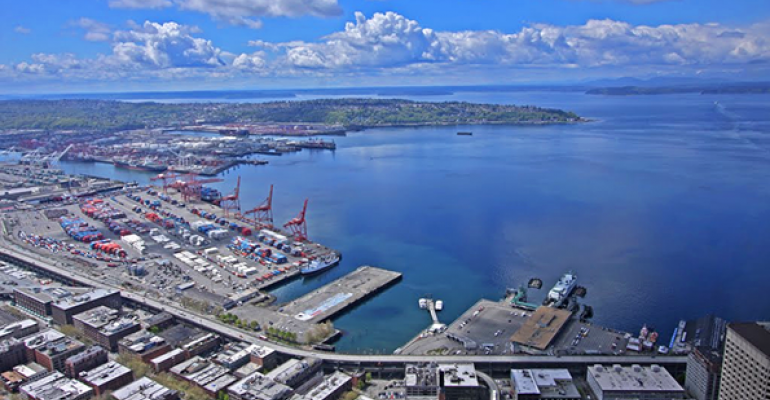Though the completion of the Panama Canal expansion has been delayed again until mid-2016, East Coast seaports, expected to benefit the most from the $5.2 project, have begun to win over more shipping traffic from the West Coast.
The expansion halted earlier this year due to a battle over $1.6 billion in cost overruns, but the work has restarted and is now about 80 percent completed. The canal, widened to handle the post-Panamax ships that can carry three times more cargo, has a new completion date of mid-2016. The larger vessels, which can carry 13,000 cargo containers, are expected to increase their use significantly, from 16 percent in 2013 to 62 percent by 2030.
Mirroring the delay, the Port Authority of New York and New Jersey recently announced it will push back its plans to start raising the Bayonne Bridge until the spring of 2015. Officials said the cranes can’t work in the winter on the $1.3 billion project, which will allow the large ships into the New York/New Jersey port. According to JLL’s 2014 Seaport Outlook, however, Houston and Jacksonville are expected to be ready to handle the traffic by next year. Miami plans to have its deep-water port dredged to more than 50 feet by late 2015.
West Coast ports, including Long Beach, Los Angeles, Oakland and Seattle, are already servicing the Post-Panamax ships. However, JLL reports that the East Coast increased its traffic volume by almost 20 percent since 2007, while the West Coast has lagged by almost 7 percent. Dain Fedora, research manager for JLL, says some of the change in traffic can be traced to logistics managers hedging their bets on the best way to get the ships into the country.
“I think the key thing supply chain managers are thinking about is diversification, they don’t want to put all their eggs in one basket” Fedora says. “You can trace it in part to the strikes that have happened on the West Coast in recent years, where ships were literally waiting in the water for days to be docked and unloaded. If I’m a supply chain manager, I’m thinking that I don’t want to put my faith in one seaport, I want to be flexible in case of disruption or congestion.”
However, even with the canal expansion, it may still be cheaper in the long run for the large ships to just ship to the West Coast and have product travel over rail to the East. The cost of shipping through the Panama Canal has tripled in the past five years, according to the JLL study, and West Coast ports are also offering competitive pricing and service options. A national retailer can replenish inventory through California, Chicago and Dallas, reaching three mega-markets serving 35 million people relatively quickly and at competitive transit rates, the study said.
“There’s still a lot of uncertainty about how much it’s going to cost to get through the expanded canal,” said Richard Thompson, managing director and head of port, airport and global infrastructure services with JLL. “Industrial development is going great, at just more than 7 percent vacancy, and development is booming. What’s getting a lot of attention right now, in industrial circles, is which ports will be the winners or losers with the Panama expansion. It’s really too early to tell.”


